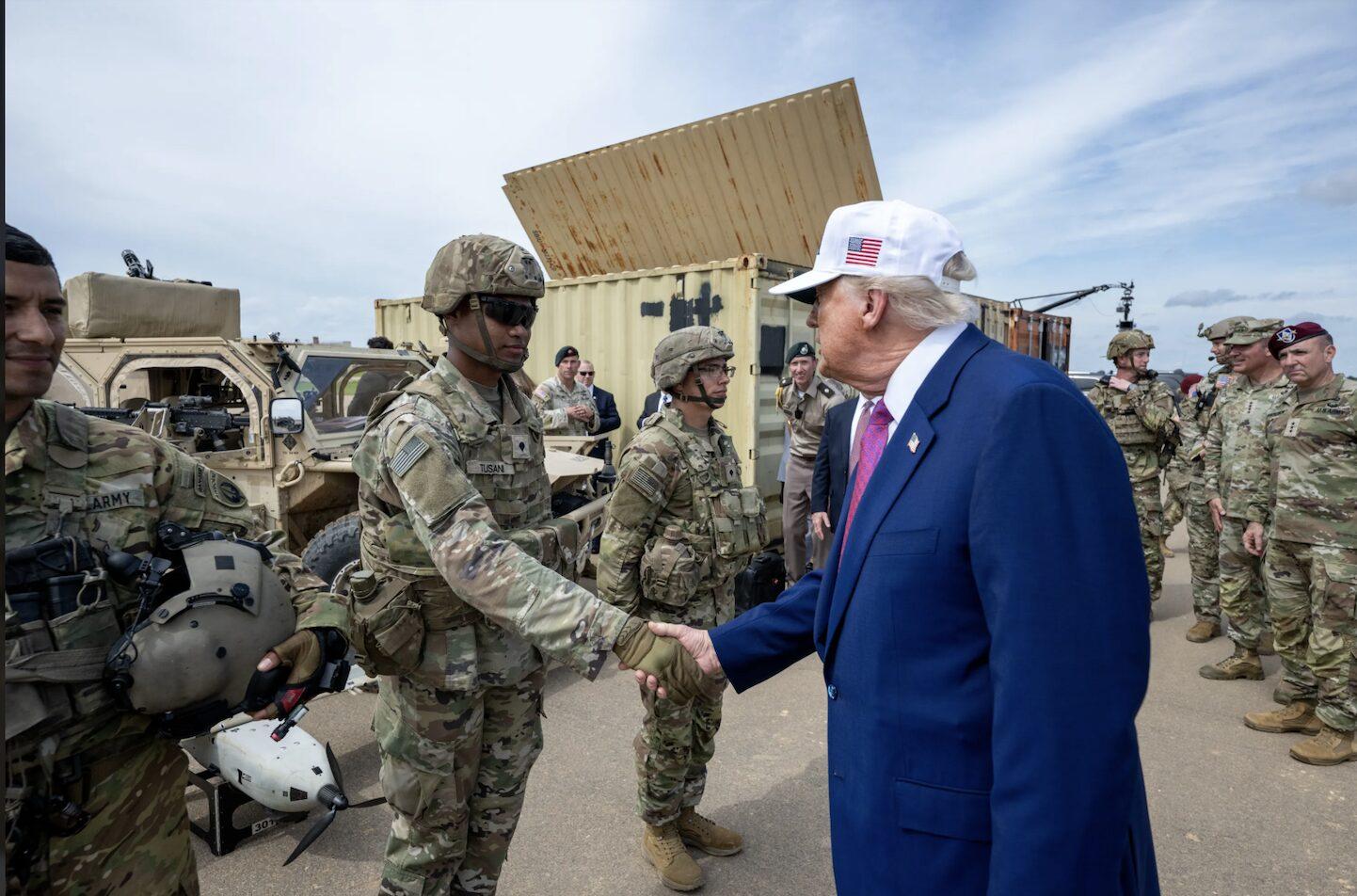Picture courtesy of the White House
Federal Deployment Continues Amid Legal Fight; Newsom Vows To Press On
LOS ANGELES — A federal appeals court on Thursday, June 12, temporarily blocked a district court order that would have returned control of the California National Guard to Governor Gavin Newsom, allowing the Trump administration to retain command of thousands of troops deployed to Los Angeles in response to ongoing protests over recent immigration raids.
The Ninth Circuit Court of Appeals granted an emergency stay just hours after U.S. District Judge Charles Breyer ruled that the deployment—initiated without the governor’s consent—violated constitutional limits. The stay allows federal authorities to maintain troop presence until a full hearing scheduled for June 17.
The decision adds another layer of legal and political tension to the widening clash between Sacramento and Washington over immigration enforcement and federal intervention.
Judge: No “Rebellion” to Justify Federalization
In his ruling earlier Thursday, Judge Breyer found that President Donald Trump lacked the legal grounds to unilaterally take control of California’s National Guard. Citing the Tenth Amendment and restrictions under the Insurrection Act, Breyer wrote that the current wave of protests—largely peaceful, with isolated instances of unrest—“does not rise to the level of a rebellion.”
“The President may not sidestep the Constitution by invoking national defense in the absence of lawful cause,” Breyer stated in a 36-page decision.
His ruling would have immediately restored operational command to Governor Newsom—until the appeals court intervened later that evening.
Newsom: ‘A Victory for Democracy, However Brief’
Governor Newsom hailed Breyer’s ruling as “a victory for democracy and the rule of law,” and said he remains confident the courts will ultimately return command of the Guard to the state.
“Californians know how to protect our communities. We don’t need political theater disguised as security,” Newsom said during a press briefing in Sacramento.
California Attorney General Rob Bonta, who joined the legal challenge, warned that allowing the federal government to override a state’s command of its own forces “sets a dangerous precedent.” Bonta cited constitutional safeguards against unauthorized military involvement in civilian affairs.
Trump Administration Defends Deployment
The U.S. Department of Justice, arguing before the appeals court, defended the President’s decision to deploy more than 4,000 National Guard troops and 700 U.S. Marines to federal properties in Los Angeles. The DOJ insisted the move was within executive authority to protect federal facilities during civil unrest.
President Trump, for his part, remained defiant.
“Without the Guard and the Marines, L.A. would have burned to the ground,” Trump told reporters Thursday evening. “We are restoring order and keeping the American people safe, whether Newsom likes it or not.”
Constitutional Showdown Looms
Legal experts say the case is now poised to become a landmark test of the balance of power between state and federal governments.
This marks the first time since 1965 that a president has federalized a state’s National Guard over the objection of a sitting governor. Depending on how the Ninth Circuit rules—and whether the Supreme Court intervenes—the outcome could reshape the boundaries of executive authority during domestic emergencies.
Civil liberties groups, including the ACLU and CHIRLA, also expressed concern over the optics and implications of militarizing response to immigration protests.
Federal Troops Remain as Legal Fight Continues
The Ninth Circuit will hear oral arguments on June 17, where both sides will present arguments on whether the President’s actions are constitutional.
Until then, federal troops will remain in place across Los Angeles, guarding federal buildings and immigration facilities—a presence that continues to stir both anxiety and defiance in affected communities.







